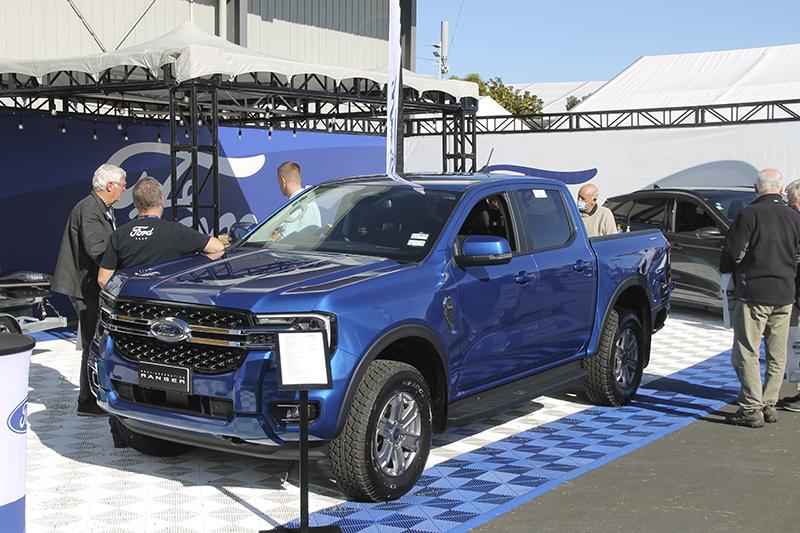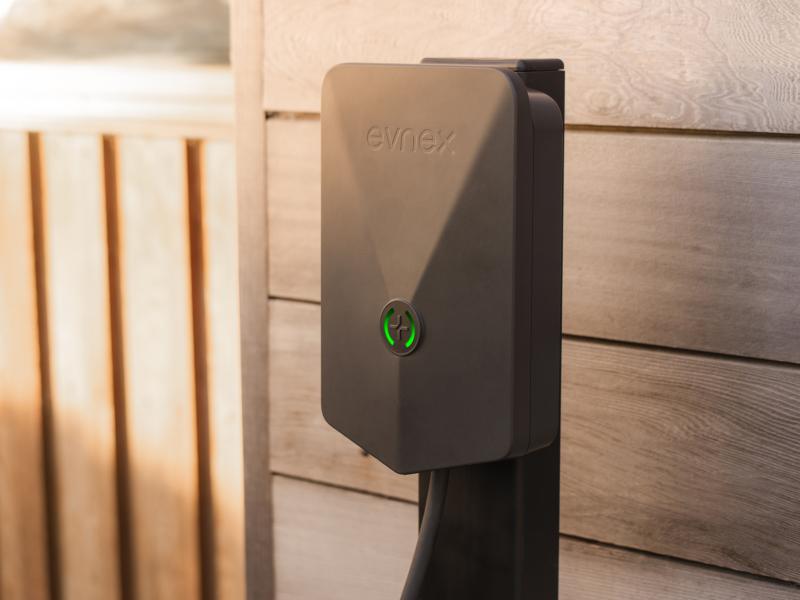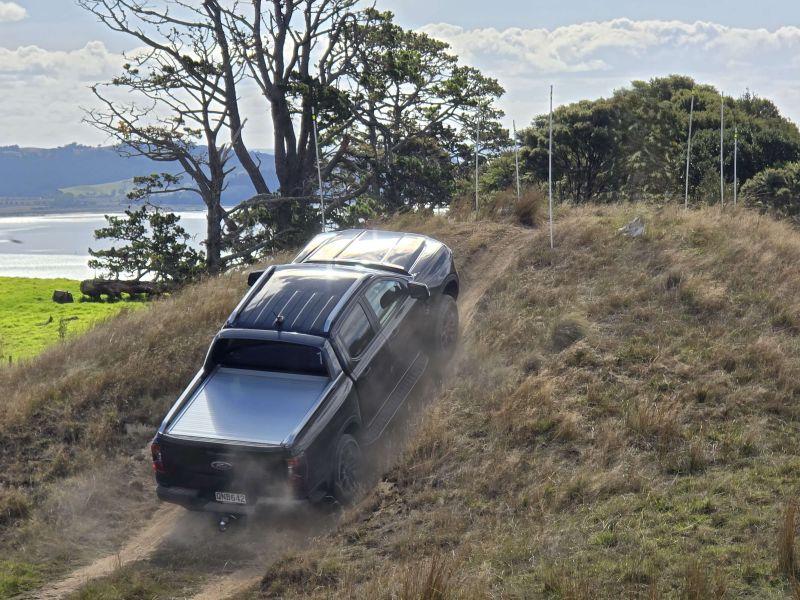Despite the somewhat ground-shaking market statistics seen in April which saw utility vehicle registrations drop by an unprecedented 71 percent, the ute is not going away anytime soon.
In fact, as observers of the industry, both NZ Company Vehicle and its sister publication NZ4WD magazine are predicting a resurgence on the part of the utility vehicle user – it just won’t be a quick bounce-back in our opinion.
Given that New Zealand’s most popular ute, the Ford Ranger, is due to be on sale by late next month, it would not be an unreasonable expectation to see ute registrations swell by then, especially as Ford New Zealand has somewhere in excess of 4000 forward orders.
And other ute suppliers will be breathing something of a sigh of relief as a July surge will allow supply to ease, since this was in fact, a significant contributor to why the registrations were so drastically affected.
Of course, you can’t ignore the coincidental ute tax of April, which saw significant price increases for utes, but as those price increases can be claimed back, the taxation issue was more a storm in a teacup, though one which is considered to the larger perfect storm of demand outstripping supply.
In any case, the ute has only suffered a temporary setback in popularity – perceived popularity more accurately, because so many small to medium and large fleets have become dependent on utes, it would be hard to imagine a world without them.
Utility can be simply defined. It means usefulness. It explains – and in this case defines – whether a vehicle is fit for purpose.
Whatever the truth of the matter, it’s also true that the ute – whether humble or bling-festooned – has a special place in our national character. People who don’t have one want one, and people who do have one want a newer one.
Small wonder then, that the vehicle of choice and desire for most Kiwis, is a ute, preferably a double-cab, most often diesel powered and mostly with a nice smooth auto transmission offering a gear for every occasion.
But which ute is right for which buyer? We all have different personalities (of course) and we all want to do different things with our utes (of course).
What is needed therefore, is a one-stop information resource that gives people a ready comparison with which to go shopping – for new or used utes.
Welcome to NZ Company Vehicle’s ute market review.
FORD Ranger
At time of writing, Ford NZ was clearing the deck to make way for the Next-Generation Ranger and would no doubt have continued the hero utility’s long-standing reign at the top of the sales charts were it not for run out stock issues. Run out Rangers continue with two-litre, bi-turbo, four-cylinder engines selling alongside the older, five-cylinder 3.2 models, but the Next-Generation’s V6 powerplants look set to be the hot topic when the new model arrives in June/July. The high end FX4, Wildtrak and Raptor models continue to demonstrate Ranger’s appeal as so much more than a working ute with unwavering popularity in the face of the Next-Generation’s imminent arrival. Current 2021/22 model data is displayed here since Next-Generation details were at time of writing, still being finalised for our market.
2WD 125kW @ 3500rpm – 157kW @ 3750rpm
4WD 147kW @ 3000rpm – 292kW @ 3750rpm
2WD 405Nm @ 1750rpm – 500Nm @ 1750rpm
4WD 470Nm @ 1750rpm – 600Nm @ 1750rpm
Fuel economy: 2WD – 7.7 l/100km – 7.8 l/100km
4WD – 8.2 l/100km – 8.7 l/100km
CO2 Output: 2WD – 211gm/km – 234gm/km
4WD – 218gm/km – 292gm/km
Payload – 2WD – 1483kg – 1133kg
Payload – 4WD – 1320kg – 758kg
Towing capacity 750kg – 3500kg
Price range 2WD – $46,990 – $56,990 + ORC and CO2 fee
Price range 4WD – $55,990 – $89,990 + ORC and CO2 fee
GMSV Silverado
GMSV arrived in force here in the first quarter of 2021, though to be fair, the Silverado range was here a few months earlier. Covid issues precluded the first arrival launch, but this allowed GMSV the chance to have all three Silverado models on the ground for the brand’s March launch. This included the standard model, the more off-road focused Trail Boss and the ‘supreme Silverado’ the HD, with its massive 6.6-litre V8 diesel boasting 1234Nm – the most torque of any in-class light commercial – and 6500kg towing capacity. Data shown does not include CO2 or fuel consumption for the HD model.
313kW / 332kW @ 3000rpm
624Nm / 1234Nm @ rpm
Fuel economy 13.7 l/100km (+-)
CO2 Output 320gm/km
Payload – 740kg
Towing capacity 4500kg – 6500kg
Price range 4WD – $119,900 – $159,900
GREAT WALL Cannon
When the Great Wall Cannon first came on scene, we predicted it would be a player to watch, as the Ute heralded the new generation of Great Wall product here – delivering a value for money proposition which is still hard to beat as proven by a small cadre of dedicated ‘Cannoneers’.
Now well established in the market, Cannon comes with a 2WD or 4x4 drivetrain, looks modern, has a very responsive Cummins diesel engine and a truckload of contemporary features.
2WD 120kW @ 3200rpm
4WD 120kW @ 3000rpm
2WD 400Nm @ rpm
4WD 400Nm @ rpm
Fuel economy: 2WD – 8.7l/100km
4WD – 8.3 l/100km – 9.4 l/100km
CO2 Output: 2WD – 251 gm/km
4WD – 280 gm/km
Payload – 2WD – 1050kg
Payload – 4WD – 1050kg
Towing capacity 750kg – 3000kg
Price range 2WD – $40,490
Price range 4WD – $44,490 – $47,490
ISUZU D-Max
The second-generation Isuzu D-Max is challenging the traditional ute supplier market by consistently knocking on the door of the top five sellers. Clearly, subtle improvements over what was already a solid performer have paid off and the top end, highly spec’ed X-Terrain model is contributing well to brand sales, despite the ‘showcase utes’ comparative newness as a concept for Isuzu and being something of a deviation from what Isuzu has traditionally stood for in this country – being an underdog brand.
140kW @ 3600rpm
450Nm @ 1600rpm
Fuel economy: 9.2 l/100km
CO2 Output: 237gm/km
Payload – 2WD – 1100kg – 1075kg
Payload – 4WD – 1065kg – 970kg
Towing capacity 750kg – 3500kg
Price range – $52,990 – $75,490 (+CO2 fee: $2990 +-)
JEEP Gladiator
Jeep quietly updated its Gladiator range in March, rationalising the range from three to two models, Night Eagle and Rubicon – adjusting the prices upwards while at the same time presenting a more premium product range. Jeep’s ‘pick up’ has retained the 3.6-litre Pentastar engine and 8-speed transmission along with all the requisite four-wheel-drive systems. Proudly displaying its Jeep heritage and design, the Gladiator is capable, practical, and provides owners with a vehicle which demonstrates individuality and style in an otherwise ‘every wave is the same’ sea of utility vehicles.
209kW @ 6400rpm
347Nm @ 41000rpm – 500Nm @ 1750rpm
Fuel economy: 12.4 l/100km
CO2 Output: 288gm/km
Payload – 681kg
Towing capacity 750kg – 2721kg
Price range – $96,990 – $104,990
LDV T60 Bi-Turbo
LDV delivered the new generation T60 Bi-turbo ute at the beginning of 2022, when the distributor here marketed it as New Zealand’s most powerful four-cylinder ute. How long LDV will be able to lay claim to that remains to be seen, but then LDV is also likely to claim laurels for being the first to market with an electric ute later this year, albeit a slightly older generation than its ICE-powered offering shown here. The T60 Bi-Turbo diesel is available with an eight-speed automatic or six-speed manual transmission, sports Apple CarPlay and Android Auto connectivity as indications of its contemporary nature and is here with a five-star ANCAP safety rating.
160kW @ 3000rpm
480Nm @ 1500rpm
Fuel economy: 9.2 l/100km – 9.3l/100km
CO2 Output: 278 gm/km
Payload – 1320kg – 758kg
Towing capacity 750kg – 3500kg
Price range – $42,538.50 – $50,588.50
MAHINDRA Pik Up
Mahindra has played a very quiet role during the Covid period with a significant amount of internal restructuring locally and some strategic planning at international level. The brand has not suffered as a result, holding a humble but reasonably consistent market share, all things considered. Mahindra is currently ramping up its production of EVs in India and its likely we will be hearing more of this while the ute market here will continue to be served with the Pik Up and local accessory enhancements.
103kW @ 3750rpm
320Nm @ 1500rpm
Fuel economy: 8.6 l/100km – 8.8 l/100km
CO2 Output: 260gm/km
Payload – 1035kg (SCab) – 928kg (DCab)
Towing capacity 750kg – 2500kg
Price range – $31,989.55 – $40,139.60 + ORC
MAZDA BT-50
Mazda’s BT-50 is still in the game, but it has taken something of a battering in between 2021 and 2022 with a more than significant drop in unit sales and market share. Unfortunately, Mazda’s history of picking dance partners where the dance partner always leads seems to have been more pronounced with the D-Max/BT-50 pair up. Mazda seems comfortable enough with its passenger line up to consider BT-50 sales icing on the cake and considering Mazda has a dedicated BT-50 fan club, perhaps the company is right. BT-50 seems to fit the bill of a comfortably consistent player in the local landscape.
2WD 140kW @ 3600rpm
4WD 140kW @ 3600rpm
2WD 450Nm @ 1600rpm
4WD 450Nm @ 1600rpm
Fuel economy: 2WD – 7.7 l/100km
4WD – 8.0 l/100km
CO2 Output: 2WD – 230gm/km
4WD – 237gm/km
Payload – 2WD – 1070kg – 1050kg
Payload – 4WD – 1085kg – 1065kg
Towing capacity 750kg – 3500kg
Price range 2WD – $48,290 – $54,790
Price range 4WD – $55,290 – $61,790
MITSUBISHI Triton
What can we say? Triton came into 2022 as the culmination of what ute buyers wanted with a solid range offering, and a strategic stock solution which paid dividends as the first quarter developed. Triton is one of the few models offering a 2WD and 4WD option with cab chassis, single and double cab options – a ute for all reasons and all seasons. Triton has seen significant upgrades along the way, including improvements to the standardised 2.4-litre engine and enhancements to a comprehensive set of safety features.
2WD 135kW @ 3500rpm
4WD 135kW @ 3500rpm
2WD 437Nm @ 2500rpm
4WD 437Nm @ 2500rpm
Fuel economy: 2WD – 9.5 l/100km
4WD – 9.8 l/100km
CO2 Output: 2WD – 251gm/km
4WD – 257gm/km
Payload – 2WD – 1140kg – 925kg
Payload – 4WD – 1220kg – 905kg
Towing capacity 750kg – 2500kg
Price range 2WD – $33,990 – $40,990
Price range 4WD – $39,250 – $53,990
NISSAN Navara
The current Nissan Navara line-up features new technology in the form of Nissan Intelligent Mobility features and safety systems, reduced noise vibration and harshness through cabin and chassis improvements and a redesign of the exterior which retains a look that is unmistakeably Nissan. Payload has been increased and a suspension upgrade has improved Navara’s on-road and off-road handling. This generation of Navara also saw the introduction of the Pro-4X – the hero Navara with commanding styling cues to match its impressive performance characteristics.
2WD 140kW @ 3750rpm
4WD 140kW @ 3750rpm
2WD 450Nm @ 1500rpm
4WD 450Nm @ 1500rpm
Fuel economy: 2WD – 7.6 l/100km
4WD – 7.5 l/100km
CO2 Output: 2WD – 200gm/km
4WD – 197gm/km
Payload – 2WD – 1282kg – 1027kg
Payload – 4WD –1175kg – 1095kg
Towing capacity 750kg – 3500kg
Price range 2WD – $41,990 – $57,490
Price range 4WD – $55,990 – $67,990
RAM
At one point RAM was the only game in town when it came to US-sized pick-up trucks and, in fairness to the brand, it did make the most of its monopoly, planting some serious wheel-prints on the NZ automotive landscape. RAM has a serious head-start on its competition with a greater model range and a growing following for its 5.7 litre V8. Recently, RAM has landed its latest 2500/3500 Laramie models, sporting the 6.7-litre Cummins turbo diesels answering the arrival of its chief rival.
4WD 291kW @ 3000rpm
4WD 556Nm @ 1750rpm
Fuel economy: 12.2 l/100km
CO2 Output: 283gm/km
Payload – 2WD – 1483kg – 1133kg
Payload – 4WD – 1320kg – 758kg
Towing capacity 750kg – 4500kg
Price range – $107,990 – $188,990
SSANGYONG Rhino
Credit where it is due, South Korean underdog SsangYong continues to be a two percent thorn in the side of the utility vehicle market in this country, but full marks for tenacity! The Rhino is still the brand’s most recent model, and it is a very good one with a solid powerplant cleaner and greener than many other brands. Pricing is also good, as is the ute’s overall ability. As with many other brands however, SsangYong has seen significant supply chain challenges brought about by Covid and these have been exacerbated by domestic issues.
133kW @ 4000rpm
420Nm @ 1400rpm
Fuel economy: 8.6 l/100km
CO2 Output: 226 gm/km
Payload – 688kg – 790kg
Towing capacity 750kg – 3000kg
Price range – $41,388.50 – $50,588.50
TOYOTA Hilux
There is no denying the Covid years have not been good to Toyota, with repercussions of what has transpired really taking its toll on the Hilux especially, with what was once New Zealand’s favourite truck now struggling to maintain third position in registrations and just under 20 percent market share. Toyota NZ, however, maintains market share should not come at the expense of a clean carbon footprint which is where the brand is focusing its intentions. Meantime, the Hilux continues under challenging supply restrictions of its 17-model range.
2WD 122kW @ 3200rpm – 150kW @ 3000rpm
4WD 150kW @ 3000rpm
2WD 385Nm @ 1600rpm – 500Nm @ 1600rpm
4WD 500Nm @ 1600rpm
Payload – 2WD – 1190kg – 995kg
Payload – 4WD – 1250kg – 995kg
Fuel economy: 2WD – 9.2 l/100km
4WD – 9.1 l/100km
CO2 Output: 2WD – 243gm/km
4WD – 238gm/km
Towing capacity 2WD – 750kg – 3500kg
Towing capacity 4WD – 750kg – 3500kg
Price range 2WD – $30,290 – $50,290
Price range 4WD – $49,790 – $61,290 ($82,490 Mako)
TOYOTA Land Cruiser 70
Contrary to popular belief, not every Toyota Land Cruiser 70 comes with a concrete pump as an optional accessory, but they do come with a reputation for being bulletproof, as evidenced by their continued existence in a climate conscious world. The Land Cruiser 70 has seen numerous upgrades, is available in three different body shapes and has front and rear differentials to tackle the toughest terrains while the 4.5-litre V8 diesel takes the Land Cruiser to the limits of most utes and then drives past them.
151kW @ 3400rpm
430Nm @ 1200rpm
Fuel economy: 12.0 l/100km
CO2 Output: 318gm/km
Payload – 1180kg – 1005kg
Towing capacity 750kg – 3500kg
Price range – $71,290 – $81,290
VOLKSWAGEN Amarok
Volkswagen’s update is not expected here until 2023 at the earliest but in the meantime the brand will continue to claw what market share it can with its rationalised range of 4MOTION four-wheel-drive models all running the eight-speed automatic transmissions only. With three models to choose from, Amarok buyers can still avail themselves of the V6 engine which – for now – provides top of its class power and torque. Amarok also has the distinction of offering regular of heavy-duty rear springs ex-factory, reflected in payload and towing ability.
132kW @ 3000rpm
190kW @ 2500rpm
420Nm @ 1750rpm
580Nm @ 1400rpm
Fuel economy: 8.6 l/100km – 9.4 l/100km
CO2 Output: 226gm/km – 247gm/km
Payload – 770kg – 666kg
Payload – 973kg – 809kg
Towing capacity 750kg – 3500kg
Towing capacity 750kg – 3300kg
Price range – $65,000 – $90,000






